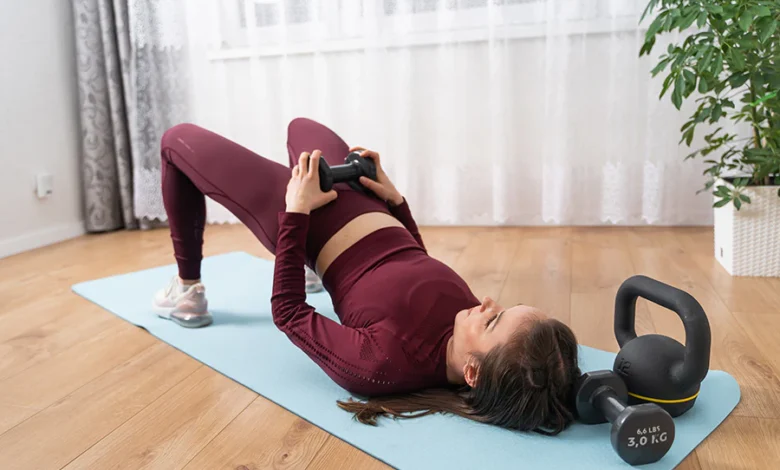The Ultimate Guide to kas glute bridge: Transform Your Workout

Introduction to kas glute bridge
Discover everything about the kas glute bridge exercise, from benefits and variations to proper techniques and common mistakes. Learn how to incorporate it into your workout routine for maximum results.
The glute bridge is a versatile and highly effective exercise that targets the lower body, particularly the glutes, hamstrings, and core muscles. This exercise is a staple in many workout routines due to its simplicity, adaptability, and profound impact on strength and stability. Whether you’re a beginner or an advanced fitness enthusiast, understanding the glute bridge can elevate your fitness game.
What is a Glute Bridge?
A glute bridge is an exercise where you lie on your back, bend your knees, and lift your hips towards the ceiling while keeping your shoulders on the ground. This movement primarily activates the gluteal muscles, along with the hamstrings and core, helping to improve strength, stability, and overall lower body function.
History of the Glute Bridge
The glute bridge has roots in physical therapy and rehabilitation, where it was initially used to help patients recover from lower back and hip injuries. Over time, fitness professionals recognized its broader benefits, incorporating it into mainstream fitness routines and athletic training programs.
Benefits of the Glute Bridge
The glute bridge offers numerous benefits, including:
- Physical Benefits: Enhances glute and hamstring strength, improves hip mobility, and supports lower back health.
- Mental Benefits: Boosts confidence through improved posture and physical performance.
- Performance Benefits: Enhances athletic capabilities by improving power, stability, and overall lower body strength.
Muscles Targeted by Glute Bridge
The glute bridge primarily targets the following muscles:
- Glutes: The main focus, ensuring strong and well-defined buttocks.
- Hamstrings: Secondary activation, helping with overall leg strength.
- Core: Stabilizes the body during the movement.
- Lower Back: Provides support and improves overall stability.
Variations of the Glute Bridge
To keep your workout routine diverse and challenging, try these glute bridge variations:
- Single-Leg Glute Bridge: Focuses on one leg at a time for increased intensity.
- Banded Glute Bridge: Adds resistance with a band around the thighs.
- Weighted Glute Bridge: Incorporates weights for added resistance and strength gains.
How to Perform a Basic Glute Bridge
Performing a glute bridge correctly is crucial for maximizing benefits and avoiding injury. Here’s a step-by-step guide:
- Lie on your back with knees bent and feet flat on the floor, hip-width apart.
- Place your arms by your sides with palms facing down.
- Engage your core and squeeze your glutes.
- Lift your hips towards the ceiling, forming a straight line from your shoulders to your knees.
- Hold for a few seconds at the top, then slowly lower your hips back to the starting position.
- Repeat for the desired number of reps.
Common Mistakes in Glute Bridge
Avoid these common mistakes to ensure effectiveness and safety:
- Arching the Lower Back: Keep your core engaged to avoid putting pressure on your lower back.
- Not Squeezing the Glutes: Focus on engaging your glutes throughout the movement.
- Lifting Too High: Raise your hips only until your body forms a straight line; overextending can cause strain.
Glute Bridge for Beginners
If you’re new to the glute bridge, start with these tips:
- Proper Form: Focus on mastering the basic form before progressing to variations.
- Use a Mat: Ensure comfort and avoid slipping by using an exercise mat.
- Start Slowly: Begin with a small number of repetitions and gradually increase as you build strength.
Advanced Glute Bridge Techniques
Once you’ve mastered the basic glute bridge, challenge yourself with these advanced techniques:
- Single-Leg Glute Bridge: Increases intensity by isolating each leg.
- Weighted Glute Bridge: Adds resistance for greater strength gains.
- Elevated Glute Bridge: Place your feet on an elevated surface to increase the range of motion.
Equipment Needed for Glute Bridge
While the basic glute bridge requires no equipment, the following can enhance your workout:
- Exercise Mat: For comfort and safety.
- Resistance Bands: To add extra resistance.
- Weights: Dumbbells or a barbell for increased intensity.
Glute Bridge with Resistance Bands
Incorporating resistance bands can enhance the effectiveness of the glute bridge by adding extra tension. Here’s how to do it:
- Place a resistance band around your thighs, just above your knees.
- Perform the basic glute bridge, focusing on pushing against the band to keep tension.
Weighted Glute Bridge
Adding weights to your glute bridge can significantly increase the challenge and benefits. To perform a weighted glute bridge:
- Place a dumbbell or barbell across your hips.
- Hold the weight securely with your hands.
- Perform the glute bridge as usual, ensuring you maintain proper form.
Single-Leg Glute Bridge
The single-leg glute bridge targets each leg individually, providing a greater challenge and helping to correct muscle imbalances. To perform this variation:
- Lie on your back with one leg bent and the other extended.
- Perform the glute bridge using only the bent leg, keeping the extended leg straight.
Glute Bridge vs. Hip Thrust
Both the glute bridge and hip thrust are excellent exercises for the glutes, but they have some differences:
- Glute Bridge: Performed on the floor, focuses more on the glutes and hamstrings.
- Hip Thrust: Performed with the upper back elevated on a bench, allows for greater range of motion and intensity.
Glute Bridge for Athletes
Athletes can benefit from incorporating glute bridges into their training to improve:
- Power: Enhanced glute strength contributes to explosive movements.
- Stability: Strengthens the core and lower back, reducing injury risk.
- Performance: Improves overall athletic performance through better lower body function.
Glute Bridge for Rehabilitation
The glute bridge is often used in rehabilitation programs for:
- Lower Back Pain: Strengthens the glutes and core, alleviating pressure on the lower back.
- Hip Injuries: Improves hip mobility and strength.
- Post-Surgery Recovery: Aids in regaining strength and mobility.
Glute Bridge for Posture Improvement
Regularly performing glute bridges can significantly improve posture by:
- Strengthening the Glutes: Supports the lower back and pelvis.
- Improving Hip Mobility: Reduces tightness in the hip flexors.
- Enhancing Core Stability: Provides a stable base for the spine.
Incorporating Glute Bridge into Workouts
You can easily incorporate glute bridges into various workout routines:
- Warm-Up: Use glute bridges to activate the glutes before a workout.
- Strength Training: Include them in your leg or full-body workouts.
- Cool-Down: Perform glute bridges as part of your cool-down to stretch and relax the muscles.



